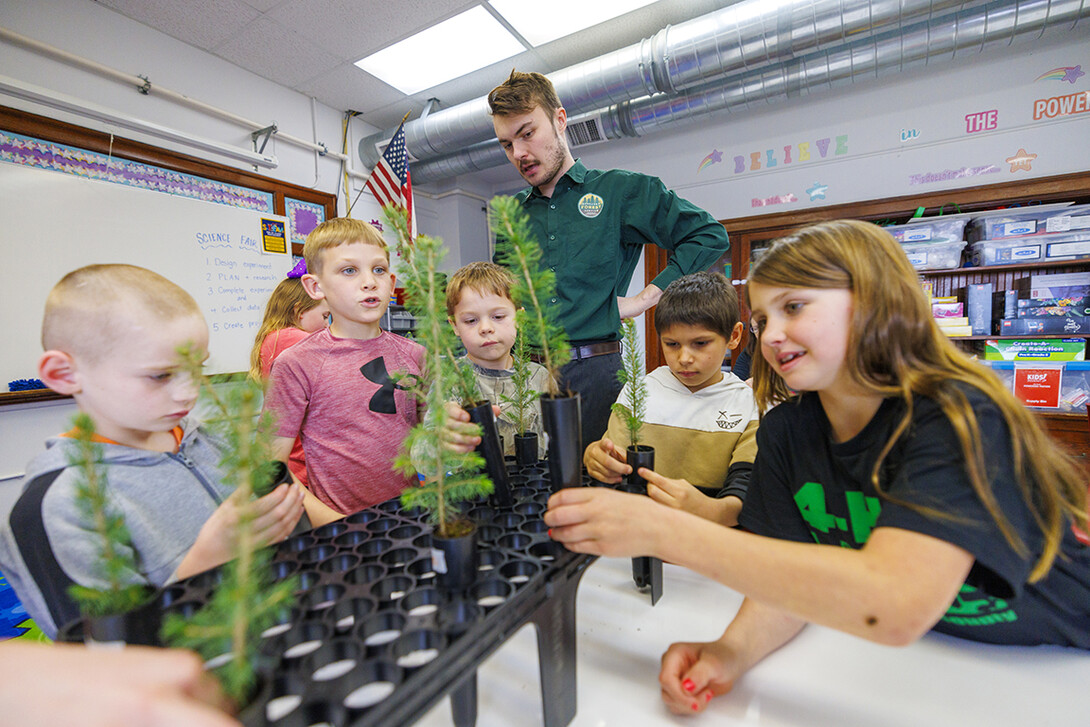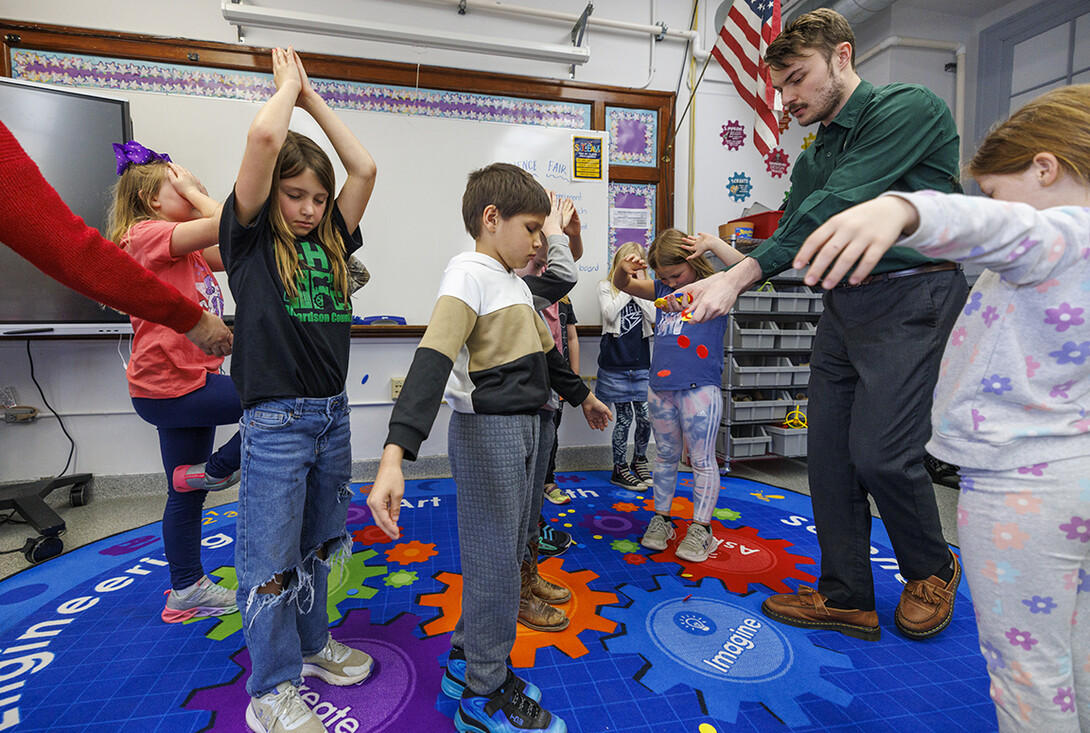
Whether it is watering a seedling or acting out a tree’s search for resources, a new program for elementary school students is connecting kids to their environment through interactive classroom activities.
Trees in the Classroom, a partnership between the Nebraska Forest Service and the Lower Platte South and Papio Missouri River natural resources districts, helps Nebraska teachers with environmental education through lessons and hands-on activities. Jack Hilgert, conservation education coordinator at the Nebraska Forest Service, said the pilot program aims to build up environmental education in the state and get Nebraska students to think about the role of trees in their communities.
“It helps students think about what people get from trees, how trees grow and benefit individual people or some of those community benefits,” Hilgert said.
The Trees in the Classroom program is rooted in a six-week series of lessons. About 600 second- and third-graders in 26 classrooms are taking part in lessons on the life cycle of a tree, its parts and structure, natural habitats and how they benefit people.
The students also each receive a seedling and will care for it for the duration of the program and then take it home to plant.
The first lesson begins with students drawing a tree from memory before going outside to illustrate the trees in their neighborhood from direct observation, and then comparing and contrasting the images.
During a visit to Humboldt-Table Rock-Steinauer Public Schools, Hilgert delivered Colorado blue spruce seedlings to students and led a lesson where students acted out how trees get and compete for resources. Jaime Frey, the class’s teacher, said the interactive lessons put the information into perspective for her students.
“Us talking about trees needing nutrients and what it might be like if they’re too crowded is a concept they’re not going to understand by just listening or seeing pictures,” Frey said. “By doing the hands-on game, they’re able to see what that feels like and experience it in real life.”

She said having received a seedling to care for gives the students a sense of ownership over their education by making them a more active part of the learning process. The students in her class will also participate in a science fair at the school in April with a project incorporating the trees.
“They can draw pictures and look at trees outside but it makes it personal,” Frey said. “They’re going to put more effort into this project because it’s personalized to them.”
The “tree factory” lesson has the kids stand in circles to replicate the anatomy of the tree. They then perform actions to demonstrate the function of the various parts of the tree. It makes connections to comparable parts of the human body and the functions they perform.
“It uses that full body movement to reinforce the layers of a tree and get them to think about comparing and contrasting,” Hilgert said. “Obviously, the structures within a tree are very different from the structures inside people, but what are some that are very similar, and some are similar to other things they might know of within their world? What is their tree doing every day on the inside that’s helping it grow?”
In another lesson, the students receive a card with part of the habitat on it and build a full classroom model of a food web. The activity teaches the kids about the role of trees in the ecosystem.
“We can talk about how all parts of an ecosystem are interconnected,” Hilgert said. “How are those neighborhood trees connected to birds or the squirrels or all the plants and animal life in their own communities?”
After completing the curriculum, Frey hopes learning about trees can help her students understand they can make a difference in their environment, even at a young age.
“They have some responsibility to take care of our world, too, and to learn about it so they can care about it as adults,” she said.
The lessons can be an extra tool in the teachers’ toolboxes when it comes to science and environmental education, Hilgert said, and can aid teachers who might already be overloaded. Rather than learning during a single field trip like a botanical garden or zoo, this kind of program can keep it on the students’ minds year-round.
“Field trips can be really memorable or transformational, but if we can connect those field experiences to what’s happening on a regular basis within the classroom as well as the natural phenomena students engage with on a daily basis, it’s so much more meaningful for them.”







